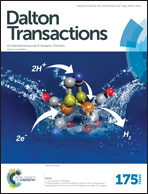Platinum complexes as light promoted anticancer agents: a redefined strategy for controlled activation†
Abstract
Site-specific delivery and amenable activation of prodrugs are indispensible criteria for designing novel anticancer agents. Platinum based drugs vanguard the chemotherapeutic regimes and over the years significant attention has been paid to achieve more efficacious drugs with fewer adverse effects. The switch from platinum(II) drugs to the inert platinum(IV) analogues proved advantageous but the new prodrugs still suffered from unspecific cytotoxic actions. Thus the photoactivation of an inert platinum prodrug specifically within neoplastic cells provided the desired spatio-temporal control over drug activation by means of illumination, thereby limiting the cytotoxic events to only at the targeted tumors. This article collates research on platinum complexes which exhibit potential light mediated anticancer effects and provides insights into the underlying mechanisms of activation. Fine tuning of the coordination sphere results in dramatic alteration of the redox and spectral properties of both ground and excited states and the cellular properties of the molecules. This concise article highlights the various light promoted strategies employed to attain a controlled release of active platinum(II) and/or reactive oxygen species such as photoreduction, photocaging, photodissociation and photosensitization. Such dual action photoactive metal complexes with improved aqueous solubility and versatility are promising candidates for combination therapy which is likely to be the future of anticancer research.


 Please wait while we load your content...
Please wait while we load your content...